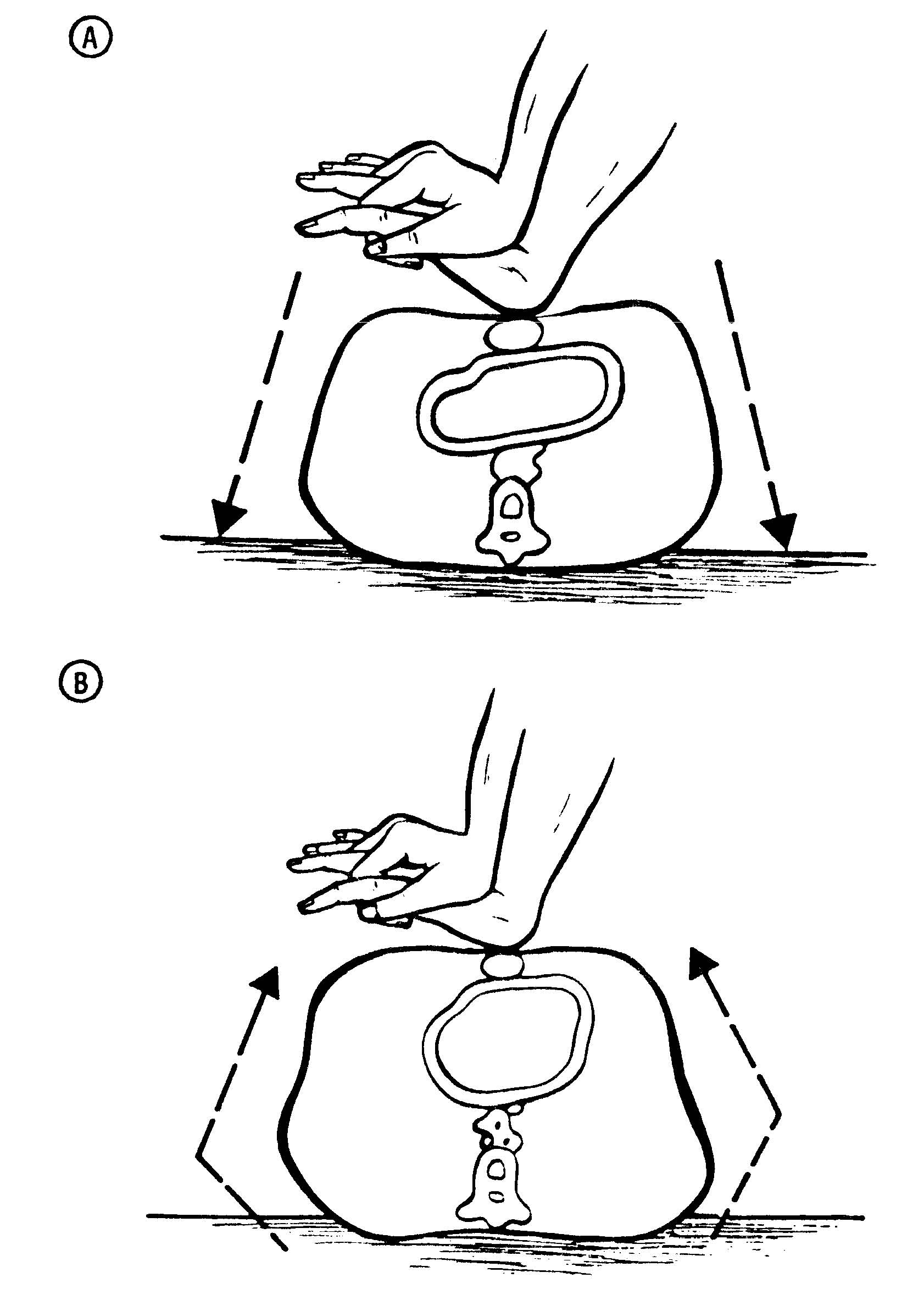Cardiopulmonary Resuscitation
LESSON 2: HEART ATTACK AND CARDIOPULMONARY RESUSCITATION
2-7
2-7. EFFECTS OF CHEST COMPRESSIONS
a. The heart is located between the sternum and the spine. If the sternum is pressed down (depressed) far enough into the chest cavity (1 1/2 to 2 inches in an adult), the heart is compressed between the sternum and the spine (figure 2-1A). Blood is then forced out of the ventricles and into the arteries.
Figure 2-1. Effects of chest compression.
A Compression.
B Release.
b. When the pressure is removed from the sternum, it rises to its normal position and the heart resumes its normal shape (figure 2-1B). Since blood was forced out of the ventricles during the compression, blood flows from the atria into the ventricles, as the heart returns to its normal shape. As blood flows out from the atria into the ventricles, blood also flows from the veins to refill the atria.
c. Each pressure-release cycle is roughly equal to one heartbeat.


